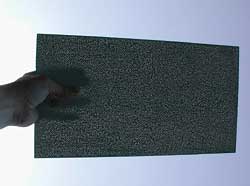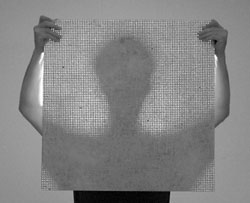Concrete Gets Glamorous in the 21st Century
He is currently experimenting with mass, seeking ever-thinner versions of his Pixel Panels. For a project in South Korea, he developed another prototype, a translucent brick that measured 10 cm x 30 cm x 60 cm. With these units, he built two walls 18 x 18 feet tall (stabilized with cables) that was particularly dramatic at only 21¼2 inches thick.
|
|||||
Post-Pantheon inventions
LaFarge, in conjunction with specialty-chemicals producer Rhodia (www.rhodia.com) and the construction arm of the Bouygues (www.bouygues.fr) corporation, developed an ultra-high-performing concrete trademarked as Ductal. It incorporates metallic or organic fibers and is highly ductile, which means that, unlike brittle materials, it can bend while continuing to carry more load. As a matter of fact, tests have shown that its strength is six to eight times greater than regular-strength concrete (under compression). Its compressive strength is as high as 230 MPa (33.350 psi) without reinforcement. Highly resistant to bending, its great flexural strength (30 to 60 MPa, or 4,350 to 8,700 psi) means that it can withstand significant transformations without breaking.











